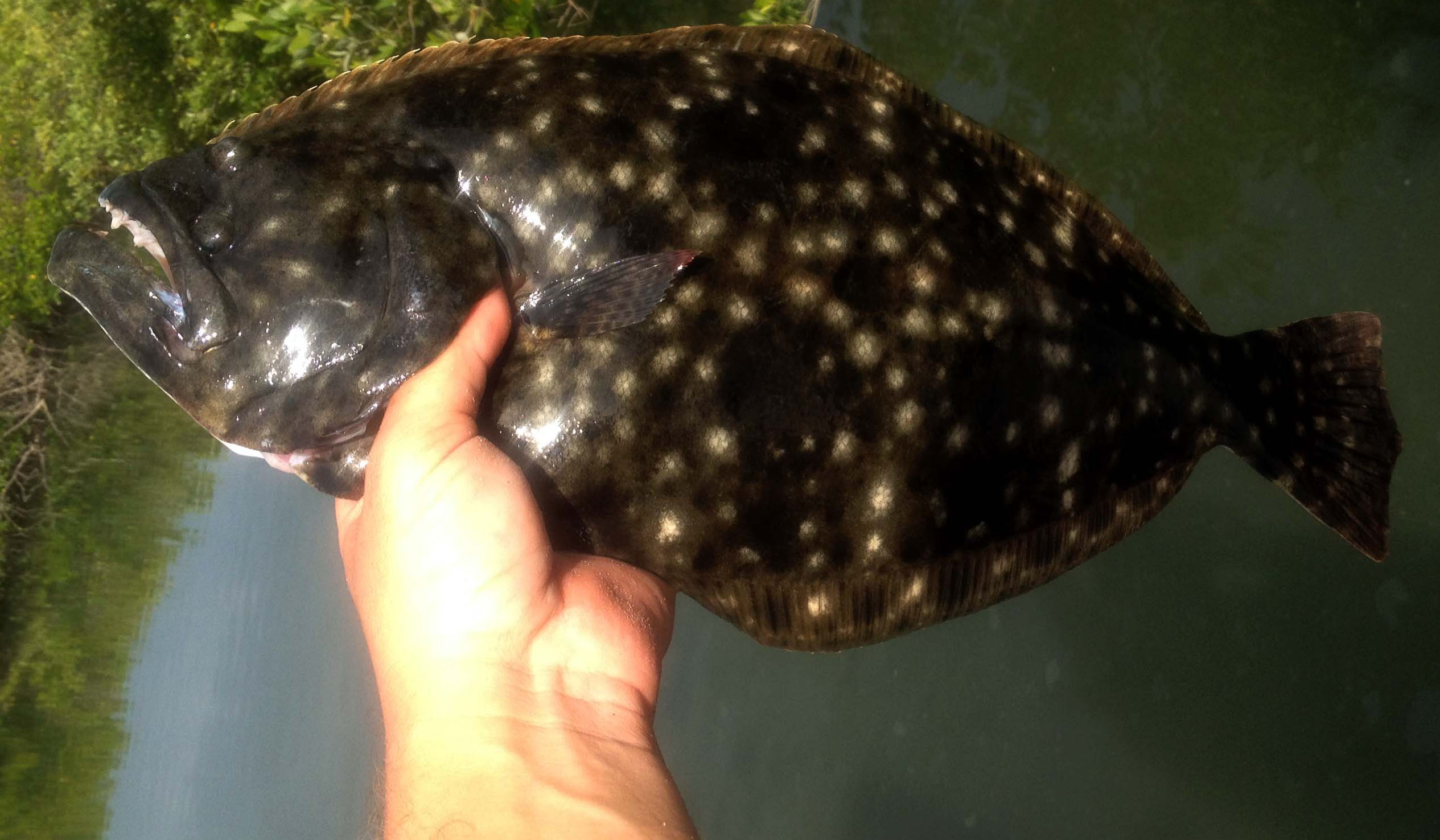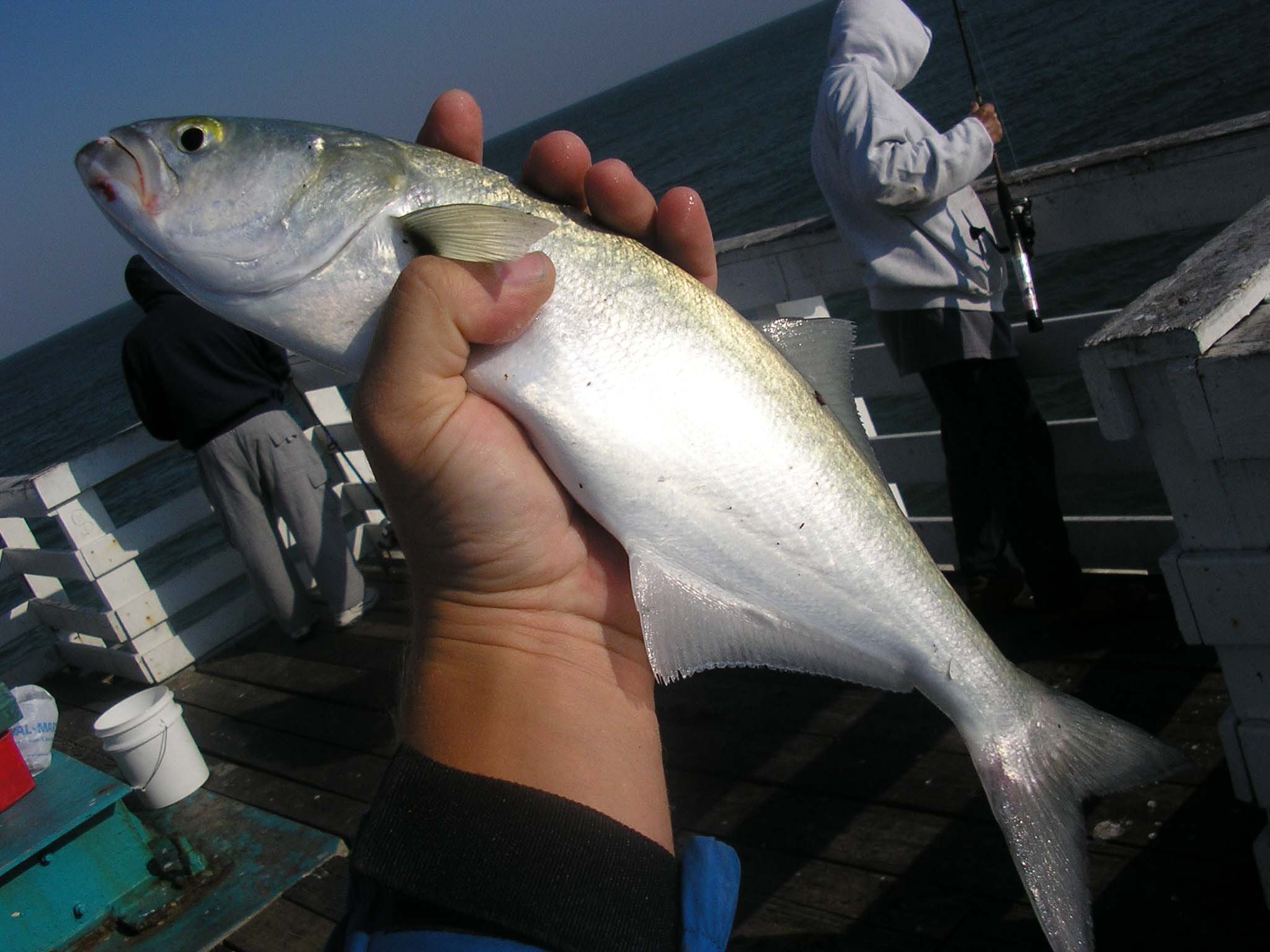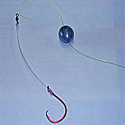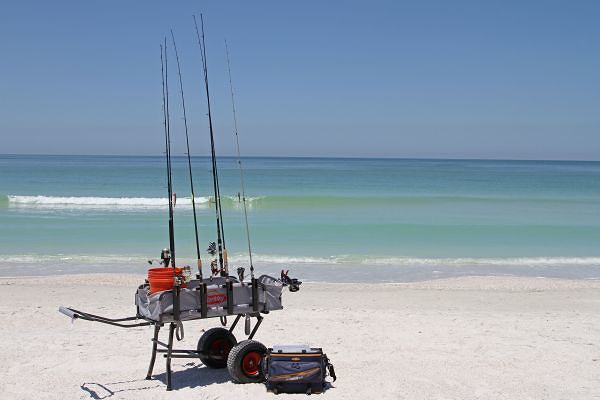Flounder, a group of very similar species of flatfish, are one of the most sought after fish in the ocean. They are one of the best tasting fish and can be a challenge to even an experienced angler.
Where to Find Flounder
Flounder are flat fish that have both eyes on one side of their body. They are ambush predators that spend all of their time on the bottom camouflaged to match the bottom. Because of their ambush tactics they prefer to be in areas that have a fair amount of water movement to carry bait fish passed their ambush positions.
Areas with tidal or river/creek flow that tend to hold a fair amount of bait fish will almost always hold flounder. They are most commonly found in the following areas:
- Inlets
- Creek Mouths
- Oyster Bars
- Bridges, Piers and Docks
- Drop Offs / Dips and Sand Bars
Gear
Flounder range in size from less than a pound up to over 20 pounds. While they can get fairly large they are not known as a hard fighting fish so equipment in the 10-15 pound range works great for these fish.
The most popular reels to use are spinning and baitcasting reels that are rated for saltwater. Spinning reels in the 2000-3000 size and baitcasting reels that are rated for 10-15 pound line work perfectly for flounder. Some recommended reels include:
- Penn Battle Spinning Reel
- Shimano Stradic FJ Spinning Reel
- Abu Garcia Ambassadeur Baitcasting Reel
- Shimano Curado Baitcasting Reel
Rods
Because Flounder are always caught on the bottom and are often found near structure a rod with a decent amount of power is needed but because of their often subtle strike a sensitive tip is also required. A length of 7 foot or longer will help increase casting distance to help cover more water. When choosing a rod make sure that it is saltwater rated.
A medium to medium heavy power with a fast to moderate action rod will be best for most inshore flounder fishing conditions.
Line
Because of where flounder are most frequently found braid is the best line for many reasons. Braid is far more sensitive than any other style of line allowing subtle hits from flounder to be detected. Its small diameter allows the bait or lure to reach the bottom faster and stay there with little resistance. Braid also has higher abrasion resistance which will often come in handy when fishing around structure such as oyster beds or pylons. 10-20lb test braid will do fine for most fishing conditions.
For a leader, 10-20lb fluorocarbon line works the best. It is nearly invisible in the water and and has much higher abrasion resistance than monofilament.
Live Bait
Flounder are not very picky eaters and most live bait commonly used will work very well for flounder. The most popular live baits for flounder are:
- Finger Mullet
- Mud Minnows
- Scaled Sardines
- Live Shrimp
When using live bait, the most successful rig is a carolina rig (often called a fish finder rig). This rig is a hook on the end of a 12 inch leader. Above the leader is a barrel swivel, a bead and then a sinker. Use only the amount of weight needed to hold the bottom, any more can affect the sensitivity of the line and make strikes more difficult to detect.
When using live bait there is always the option of using a circle hook. Circle hooks help reduce foul hooked fish and will frequently catch more fish than a typical J style hook. For flounder a circle hook of 1/0-3/0 is recommended.
For minnows the best way to hook them is through the lips, this will keep them facing the correct direction on retrieve and reduce tangling. The same is true for live shrimp, hook them through their head just in front of their eyes.
Cut or Dead bait will work for flounder but it is far less effective than live.
Lures
Flounder are known as willing takers of lures. They have been caught on many artificials ranging from shrimp imitations all the way to the popular freshwater lure known as the “beetle spin”. Some of the most popular lures for flounder include:
- Berkeley Alive Gulp Shrimp
- Bucktail Jig with Grub Trailer
- Berkeley Alive Swimming Mullet
- DOA Cal
Scented and Flavored lures will more often than not outperform other lures. Flounder will often grab a lure and taste it before taking it into their mouths, and will often reject non-flavored lures much more rapidly than their counterparts.
Techniques
The most important factor in catching flounder is not the bait or lure, but the techniques used. These fish are ambush predators that spend all of their time on the bottom. The techniques used should be tailored to the flounders lifestyle.
The most effective technique for hooking into a flounder is to make a long cast and VERY slowly retrieve the bait. When it feels like the retrieve is slow enough, it should be just a little bit slower. Slowly bump the bait along the bottom and when it crosses the path of a flounder, they will have a hard time denying the bait!
Detecting a Hit
Often times when a flounder hits a lure or a bait the hit can be difficult to detect. They will simply wait for the bait to get near them and mouth it as it passes. This is often detected as a small thump or simply as increased weight at the end of the line.
Setting the Hook
Because flounder do not often strike aggressively they will need to be allowed time to get the lure or bait fully into their mouths. They will spend a short amount of time, 5-10 seconds adjusting the bait to fit into their mouths. The angler should allow 5-10 seconds after detecting a strike before setting the hook. Set the hook using a rapid upward motion, this will also help get the large fish off the bottom, which can be a challenge of they are very large.
*** Do not use a large sweeping motion if using circle hooks for live bait. Gently lift the rod tip up and start to reel the line in rapidly. Circle hooks are designed to hook the fish in the side of the mouth with this process and a large sweeping motion will pull the hook out of their mouth more times than it will not. ***
Tips and Tricks
- Fish Slower than you think you should
- Make sure to give the flounder time to get the lure or bait into its mouth after a strike is detected before setting the hook.
- Check your local regulations on size and bag limits.
- Some flounder that are legal size will often be rather thin and should be released as they just don't have enough meat on them to justify the harvest.
- Most Flounder that are lost are lost as they are being pulled out of the water. Use a net to land them!





